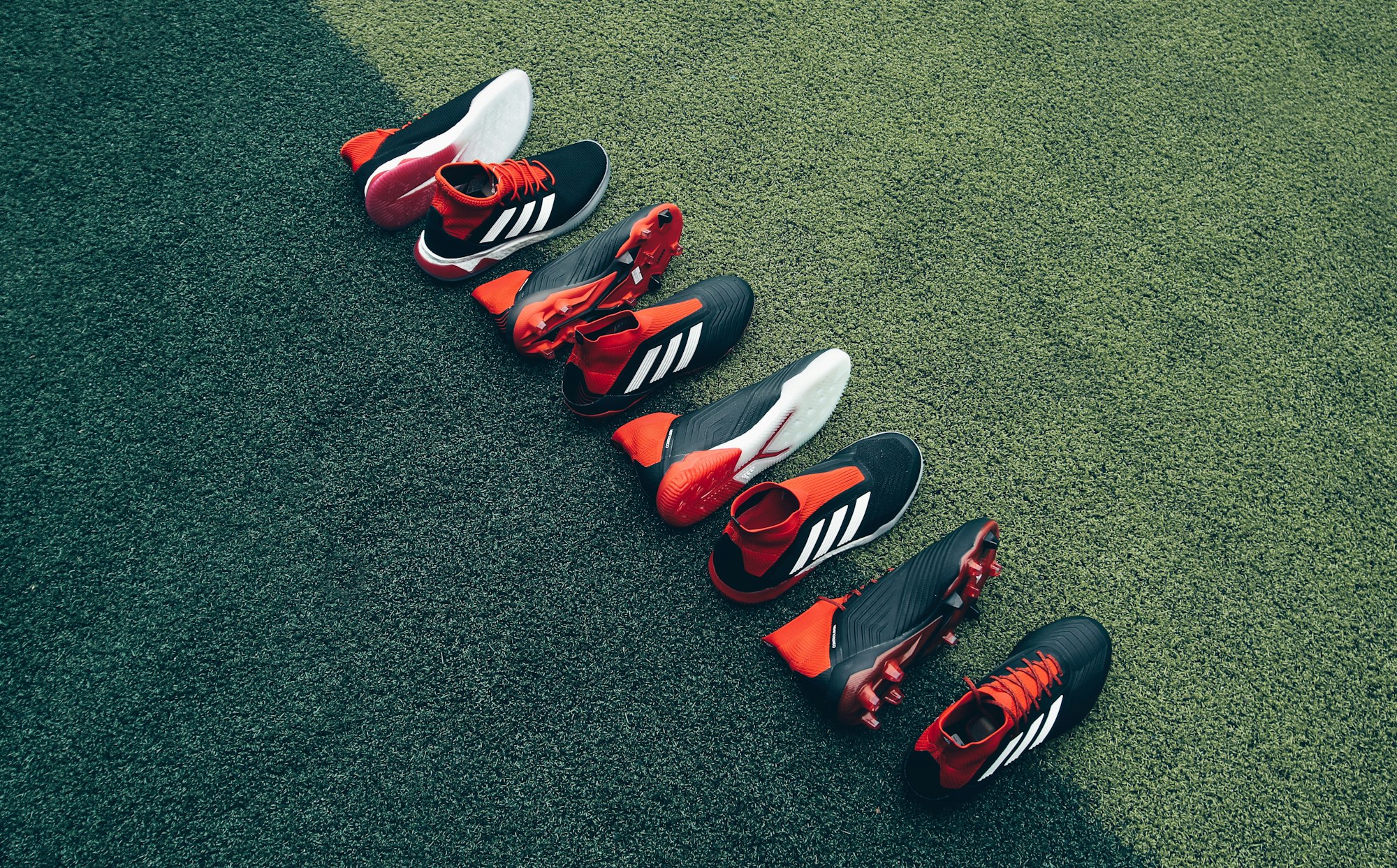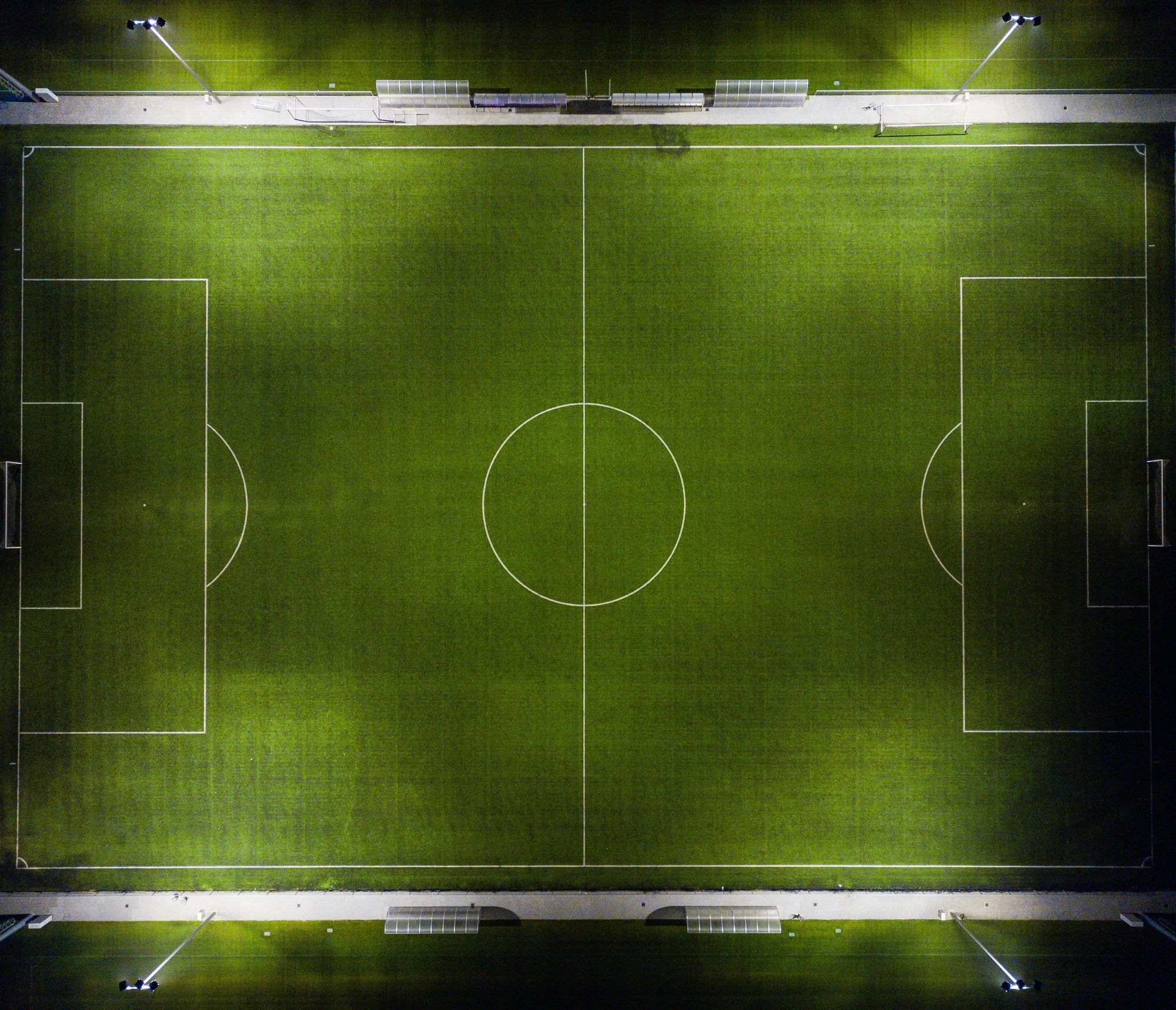A Beginner's Guide to the Rules of Football
European football, also known as soccer, is one of the most popular sports in the world, with millions of fans tuning in to watch matches every week.

I. Introduction
European football, also known as soccer, is one of the most popular sports in the world, with millions of fans tuning in to watch matches every week. While the excitement of the game itself is a major draw for many, it can be difficult to fully appreciate the sport without a basic understanding of its rules. In this article, we'll provide a complete overview of the rules of European football, including the players and necessary equipment, the dimensions of the field, and the different methods of advancing the ball. We'll also cover penalties, fouls, timing, and overtime, so that you can have a comprehensive understanding of the game and fully enjoy the thrill of watching it.
II. Players, Substitutions, Equipment, and Referees
A football game requires 11 players on each team to be on the field at the same time, while 5 or 7 substitutes can stay on the bench, ready to enter when the manager decides. The starting team includes a goalkeeper who is responsible for protecting the goal, and 10 outfield players who are divided into defense, midfield, and forward positions. The goalkeeper is the only player allowed to use their hands, but only within their own penalty area.
Substitutions are a crucial aspect of football that allow teams to make changes to their lineup during a match. Each team is allowed to make up to five substitutions during a game, using a maximum of 3 stoppages. Some competitions may allow for additional substitutions in extra time. Substitutions can be made at any point during the game, but the player being substituted must leave the field of play before the replacement can enter. This ensures that there are always 11 players on the field for each team. Substitutions are often used strategically, such as to bring on a fresh player in the closing stages of a game, or to make a tactical change to the team's formation. In some cases, substitutions may be made due to injury or fatigue. Coaches must carefully manage their substitutions, as once they have been used, they cannot be reversed.
Players in European football require also specific equipment for safety and performance. This includes football boots or cleats, which provide traction and support, and shin guards to protect the lower leg from injury. Each player also wears a numbered jersey and shorts, with the team's colors and crest on the front. The goalkeeper wears a different colored jersey to distinguish him from the rest of the team and the opposing team. The ball used in football must meet specific size and weight requirements, typically made of leather or synthetic materials. The playing field must also meet specific dimensions, with marked lines indicating the boundaries of the field and the positions of the goalposts.
A football game also requires referees. Referees play a crucial role in football, ensuring that the game is played fairly and within the rules. The role of the referee is to enforce the laws of the game, make decisions on fouls and penalties, and ensure that the game is played safely and within the spirit of fair play. During the game, the referee has the power to stop play if they see an infringement of the rules, such as a foul, handball, or offside. They can award free kicks, penalty kicks, or even issue red or yellow cards to players who break the rules. The referee's decision is final, and there is no appeal process for players or coaches to challenge their decisions. In addition to the referee, there are also two assistant referees or linesmen who help to make decisions on offside, corner kicks, and throw-ins. In professional matches, there may also be a fourth official who assists the referee with substitutions, keeping time, and monitoring the conduct of players and coaches on the sidelines.
VAR (Video Assistant Referee) is a technology used in football to assist referees in making decisions during a match. It was introduced to help referees make more accurate and informed decisions in situations where they may have missed something or made a mistake. VAR involves a team of officials who review live footage of the match from various angles and communicate with the referee on the pitch via a headset. They can advise the referee on whether to review a decision or not and provide them with additional information that they may have missed. VAR is used to review decisions relating to goals, penalties, red cards, and mistaken identity. The referee can also choose to consult VAR if they are unsure about a decision they have made. While VAR has helped to improve the accuracy of decisions in football, it has also been criticized for slowing down the pace of the game and creating confusion among fans and players. There have also been instances where VAR has failed to provide a clear decision, leading to controversy and frustration.
Goal line technology is a recent addition to football that aims to reduce human error in decision-making. It uses technology to determine whether or not the ball has crossed the goal line and should be counted as a goal. The technology involves cameras mounted around the stadium, and a special device in the ball. When the ball crosses the goal line, the device sends a signal to the referee's watch, indicating that a goal has been scored.
III. The Football Pitch
The size and dimensions of a European football field, also known as a pitch, are regulated by the International Football Association Board (IFAB).

Field markings: The field of play is rectangular and marked with lines called boundary lines. The two longer boundary lines are touchlines and the two shorter lines are goal lines. It is divided into two halves by a halfway line, which joins the midpoints of the two touch lines. The center mark is at the midpoint of the halfway line. A circle with a radius of 9.15 m is marked around it. Marks are made off the field of play, 9.15m from the corner arc and at right angles to the goal lines and the touch lines, to ensure defending players retreat this distance when a corner kick is taken.
The length of the touchline is greater than the length of the goal line. All lines are not more than 12cm wide.
- Length (touch line): Minimum 90m, maximum 120m.
- Width (goal line): Minimum 45m maximum 90m.
For senior football, the recommended field dimension is 105m long and 68m wide.
Run-off area: The run-off area or buffer zone is 3m minimum. Where pitches are located alongside each other, a minimum of 6m is required. The run‑off area beyond the pitch is free of any obstacle (including dugouts and floodlight columns) to ensure players and officials do not injure themselves by running into any fixed object. The run‑offs are surfaced with exactly the same surface as the playing area.
Goal area: Two lines are drawn at right angles to the goal line, 5.5m from the inside of each goalpost. These lines extend into the field of play for a distance of 5.5m and are joined by a line drawn parallel with the goal line. The area bounded by these lines and the goal line is the goal area.
Penalty area: Two lines are drawn at right angles to the goal line, 16.5m from the inside of each goalpost. These lines extend 16.5m into the field of play and are joined by a line drawn parallel with the goal line. The area bounded by these lines and the goal line is the penalty area. Within each penalty area, a penalty mark is made 11m from the midpoint between the goalposts and equidistant to them. An arc of a circle with a radius of 9.15m from the center of each penalty mark is drawn outside the penalty area.
Flag posts: A flag post, not less than 1.5m high, with a non‑pointed top and a flag is located at each corner. Flag posts are also located at each end of the halfway line, not less than one meter outside the touch line. A flag post, not less than 1.5m high, with a non‑pointed top and a flag is located at each corner.
Goals: A goal is located on the center of each goal line. A goal consists of two upright posts equidistant from the corner flag posts and joined at the top by a horizontal crossbar. The goalposts and crossbar must be made of wood, metal or other approved material. They are square, rectangular, round or elliptical in shape and are not dangerous to players. The distance between the posts is 7.320m and the distance from the lower edge of the crossbar to the ground is 2.44m. Both goalposts and the crossbar have the same width and depth of 12cm. The goal lines have the same width as the goalposts and the crossbar. Goal nets are attached to the posts and ground behind the goals. The goalposts and crossbars are white. For safety reasons goals are anchored securely to the ground.
Technical area: The technical area includes:
- Two team benches, capable of seating nine people in each bench.
- Cover to protect the players and officials from the elements thrown by spectators.
- Identical fixtures for both teams.
- A table and chair for the 4th Official if required.
IV. Timing and Overtime
A European football game consists of two halves of 45 minutes each, for a total of 90 minutes. The game clock is typically kept by the referee, who has the authority to add additional time to the end of each half to account for stoppages in play, such as injuries, substitutions, or time-wasting tactics by players. At the end of the first half, there is a 15-minute break for players to rest and receive tactical instructions from their coaches. During this break, players may also receive medical attention or make equipment adjustments.
In a championship or group stage game, the winner receives 3 points, the loser receives 0 points and in case of a tie game, both teams receive 1 point. If the game is tied at the end of regulation time of a knock-out game, additional time called "extra time" may be added. Extra time is typically played in two 15-minute halves, and if the game remains tied after extra time, the game may be decided by a penalty shootout. In a penalty shootout, each team takes 5 penalty shots. The teams alternate taking the shots and the team that scores the most penalties wins the game. If the game is tied after the execution of the 5 penalties, teams continue to alternate taking more penalties until one team misses, while the other scores. A player cannot execute a second penalty until all his teammates already executed one, so usually after 11 penalties per team, the same players start to execute penalties again in the same order.
V. Rules of football
Scoring
The scope of the game is to score more goals than the opposition. To score a goal, a team must kick the ball into the opposition's goal. In order to achieve that, they must pass the ball and advance into the opposition's half, finishing a play by a shot on goal. Advancing the ball is a crucial aspect of European football. There are various methods that players can use to move the ball towards the opposition's goal. One of the most common ways is passing, where players use their feet to pass the ball to a teammate who is in a better position to score. Players can also advance the ball by running with it, either by dribbling or sprinting towards the goal. Kicking is another method of advancing the ball in football, and players can use various techniques to kick the ball. For instance, players can kick the ball with the inside of their foot for a more accurate and controlled pass, or use the laces of their boots to shoot the ball with greater power. In addition, players can also use headers to advance the ball, especially in situations where the ball is in the air. Only the arms are not allowed when touching a ball to pass or shot on goal. The goalkeepers are the only players on the field that can use their hands to catch or deflect the ball. Overall, the ability to advance the ball effectively is crucial for any successful football team, and players must master various techniques to be able to do so.
Kicks
In European football, there are several types of kicks that can be awarded to a team during a match. Each type of kick has its own specific rules and regulations:
- A throw-in is awarded when a team kicks the ball on either sideline. The opposition player is allowed to throw the ball back into play from the position where the ball left the field. A throw-in pass will not catch a player offside.
- A free kick is awarded to a team when an opponent commits a foul. The kick is taken from the spot where the foul occurred and can be either a direct or an indirect free kick. In a direct free kick, the kicker can score directly from the kick, while in an indirect free kick, another player must touch the ball before a goal can be scored.
- A corner kick is awarded to a team when the ball goes out of play over the goal line, with the defending team being the last to touch the ball. The kick is taken from the corner arc and allows the attacking team to attempt a shot on goal or a pass to the players that gave gathered in the goal area.
- A penalty kick is awarded to a team when a player commits a foul inside their own penalty area. The penalty kick is taken from the penalty spot and is an unopposed shot at goal. The goalkeeper must remain on the goal line until the ball is kicked.
VI. Competitions
Each country has its own football competitions, which are usually organized on multiple levels. Normally three internal competitions exist in each country, but this varies from country to country:
- Championship: A yearly competition divided into 2 halves in which all teams in the division play each other once on the road and once at home. The team that finishes with the most points is crowned as country Champion, while the teams that finish on the bottom spots are relegated to the below division and replaced during the next season with the best teams from the division below.
- Cup Competition: A yearly knock-out style competition that includes all teams in the country (even semi-pro and amateur). The teams are chosen via a random draw and play only one knock-out game per phase, until the remaining two teams play the Cup Final which is usually held at a predetermined location at the beginning of the competition.
- Super Cup: The winner of the Championship and the Cup usually play at the beginning of the season to determine the winner of the Super Cup. This competition is represented only by one game played at a predetermined location.
European Competitions
Depending on the performance in previous years, each European League is ranked on scale and the best teams in each country qualify to multiple European Club Competitions. Europe holds 4 such competitions, as follows:
- Champions League: 32 of the best teams in Europe qualify after a number of qualification matches to the Champions League, which represents the best football competition in the world. The teams are drawn into 8 groups of 4 teams and each play a doubleheader with all of the teams in the group during the August - December part of the year. Starting with February, the best 2 teams of each group qualify for a Knock-Out phase and here is where club football is at its best. The 2 best teams of the competition play a single game to determine the winner of the Champions League, a match that is played yearly at the end of May.
- Europa League: The teams that finish the championships on the places below the Champions League places or get knocked out of the Champions League qualifying rounds, play for the Europa League, competition that is played following the same system as Champions League.
- Europa Conference League: The teams that finish the championships on the places below the Europa League places or get knocked out of the Europa League qualifying rounds, play for the Europa Conference League, competition that is played following the same system as Champions League and Europa League.
- European Super Cup: The winners of the Champions League play the winners of the Europa League to determine the winner of the European Super Cup. This competition is represented only by one game played at a predetermined location.
This system is replicated also in other continents such as South America, Asia, Africa or Central and North America. Each year, the best teams of each continent meet into a competition called the Club's World Cup, which is played using the same system as the competitions above.
In the same time, similar competitions exist for the National Teams:
- Europa Nation's League: Competition held each 2 years and used to determine a number of the teams that qualify for the European Championship.
- European Championship: A competition held each 4 years to determine the best team in Europe. Similar competitions are held in each continent (Copa America, African Cup of Nations, etc.).
- World Cup: A competition held each 4 years to determine the best team in the World.
VII. Conclusion
Understanding the rules of European football is essential for both players and fans, as it allows for a deeper appreciation and enjoyment of the game. Knowing the rules enables fans to follow the action and understand the decisions made by referees, while players who understand the rules can improve their performance and avoid penalties or other rule violations. Whether you're a lifelong fan or a newcomer to the sport, knowing the rules of European football is crucial to fully engage with this beloved game.

